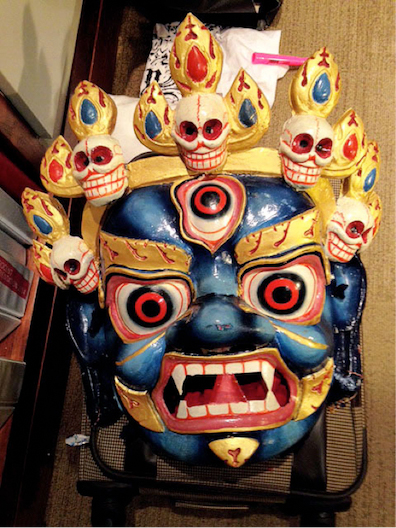
Cham mask

Cham mask
Cham dance is believed by faithful Tibetans to balance shifting spiritual energies and to remove obstacles for viewers, thereby increasing harmony and peace for all living beings.
Experience Cham Dance: The Art of Healing through Movement explored this notion by examining cham costumes and masks in the exhibition Becoming Another: The Power of Masks.
The workshop began in the Becoming Another gallery, where Tashi Chodron, the Rubin’s coordinator of adult and academic outreach, spoke about the history and meaning of the artworks on view. Then, after an hour and a half in the gallery, a hush fell over the space as Lama Ugen Rongdrol Palden, our guest cham master, stepped off the elevator wearing his elaborate cham costume.
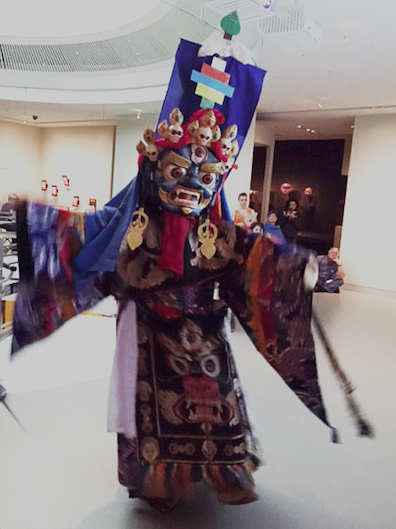
Lama Ugen Rongdrol Palden appears in his Cham costume.
Above his vibrantly decorated vestment with long triangular sleeves, he wore a lion-head mask surmounted by a crown of skulls and festooned with ribbons. His elegant cham movements isolated the body into sectors so that the head moved with majestic solemnity, like a lion; his arms flowed in smooth waves like water; and his hands flicked like prayer flags fluttering in a soft breeze. After a series of smooth and solemn steps, he would turn in a circle, pivoting on one leg, and then repeat the steps once again. It was thrilling to watch in action.
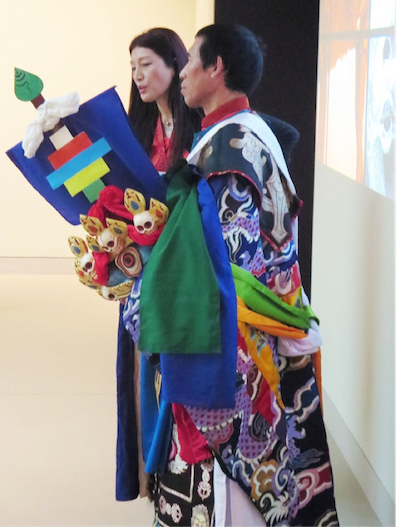
Tashi Chodron with Lama Ugen.
After the performance, Tashi spoke about growing up in the Tibetan refugee camp in India and being introduced to the transformational power of cham while there. Then there was an interview on cham, filmed for the occasion, with Khenchen Tsewang Gyatso Rinpoche, senior abbot of Namdroling Monastery in Bylakuppe, South India. In watching the abbot in conversation, the vibrant resonance of this ancient healing mask tradition was wonderfully apparent and left the group with many questions, which Tashi and Lama Ugen answered.

Participants learned Cham moves from Lama Ugen.
At the end of the workshop, there was an opportunity to practice a few cham dance steps with Lama Ugen.
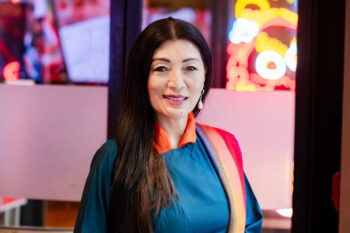
Tashi Chodron is the Himalayan programs and communities ambassador at the Rubin Museum of Himalayan Art.
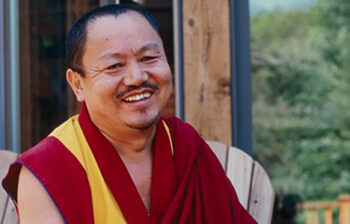
Khenchen Tsewang Gyatso Rinpoche was born in 1954 in southern Tibet and fled with his family to Bhutan and India in 1962. Entering a monastery at the age of ten, he was enthroned as a khenpo, or professor, in the Nyingma School of Tibetan Buddhism by Pema Norbu Rinpoche. Khenchen Tsewang Gyatso has received all of the major lineage empowerments and transmissions of the Nyingma School. His open, direct, and thorough style has made him an effective teacher in America, Taiwan, and Chinese communities in Singapore, Hong Kong, and the Philippines.
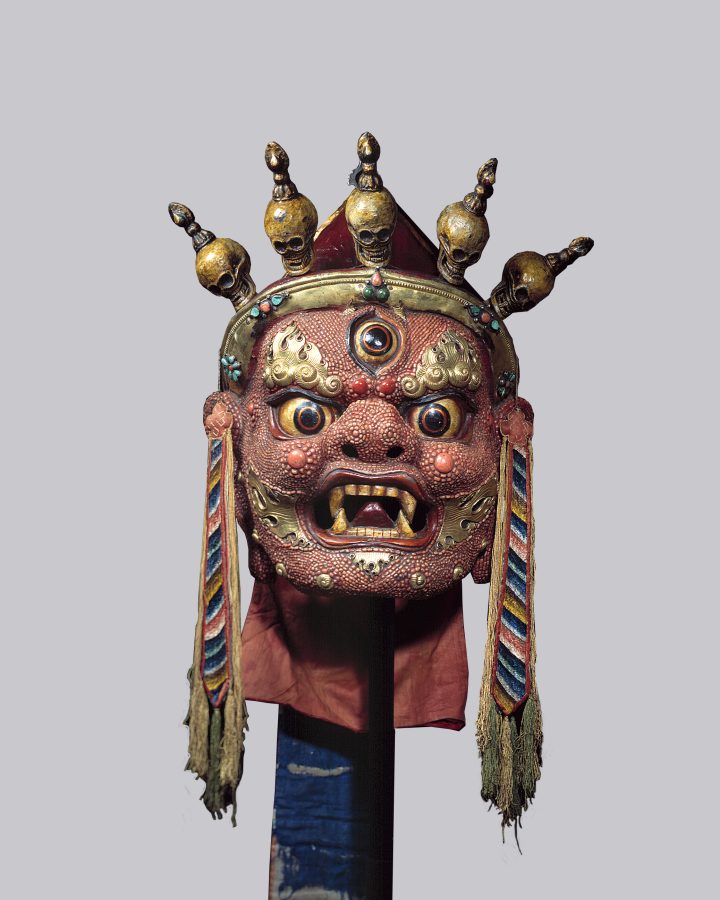
Rubin Museum
150 W. 17th St., NYC
Get the latest news and stories from the Rubin, plus occasional information on how to support our work.